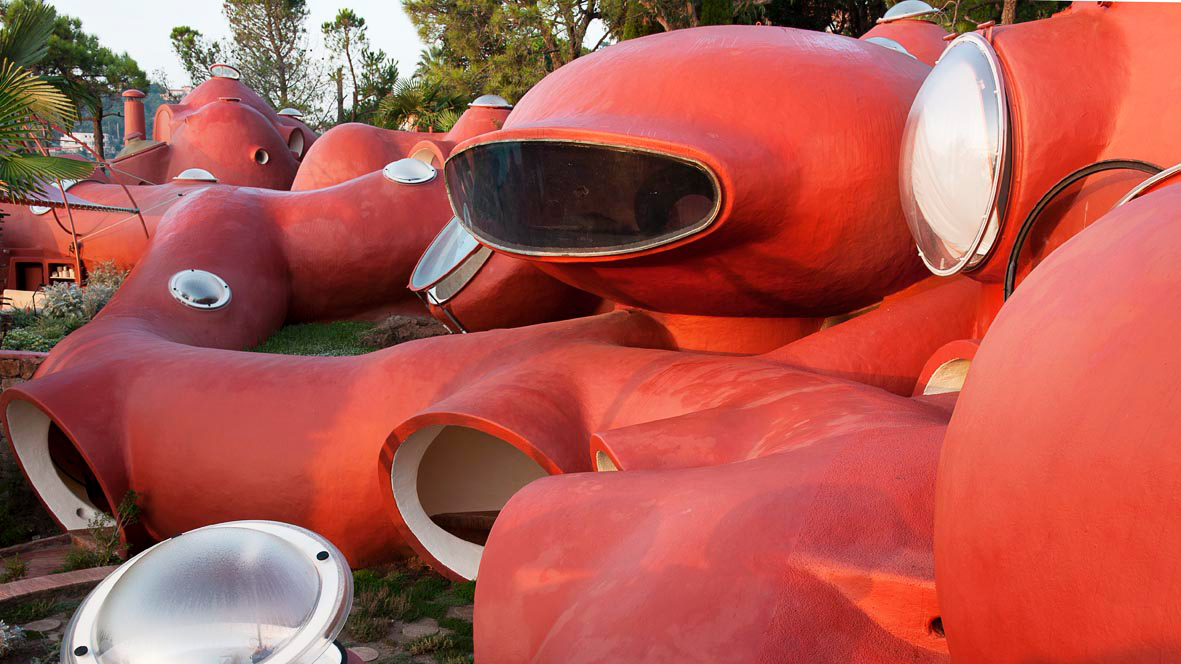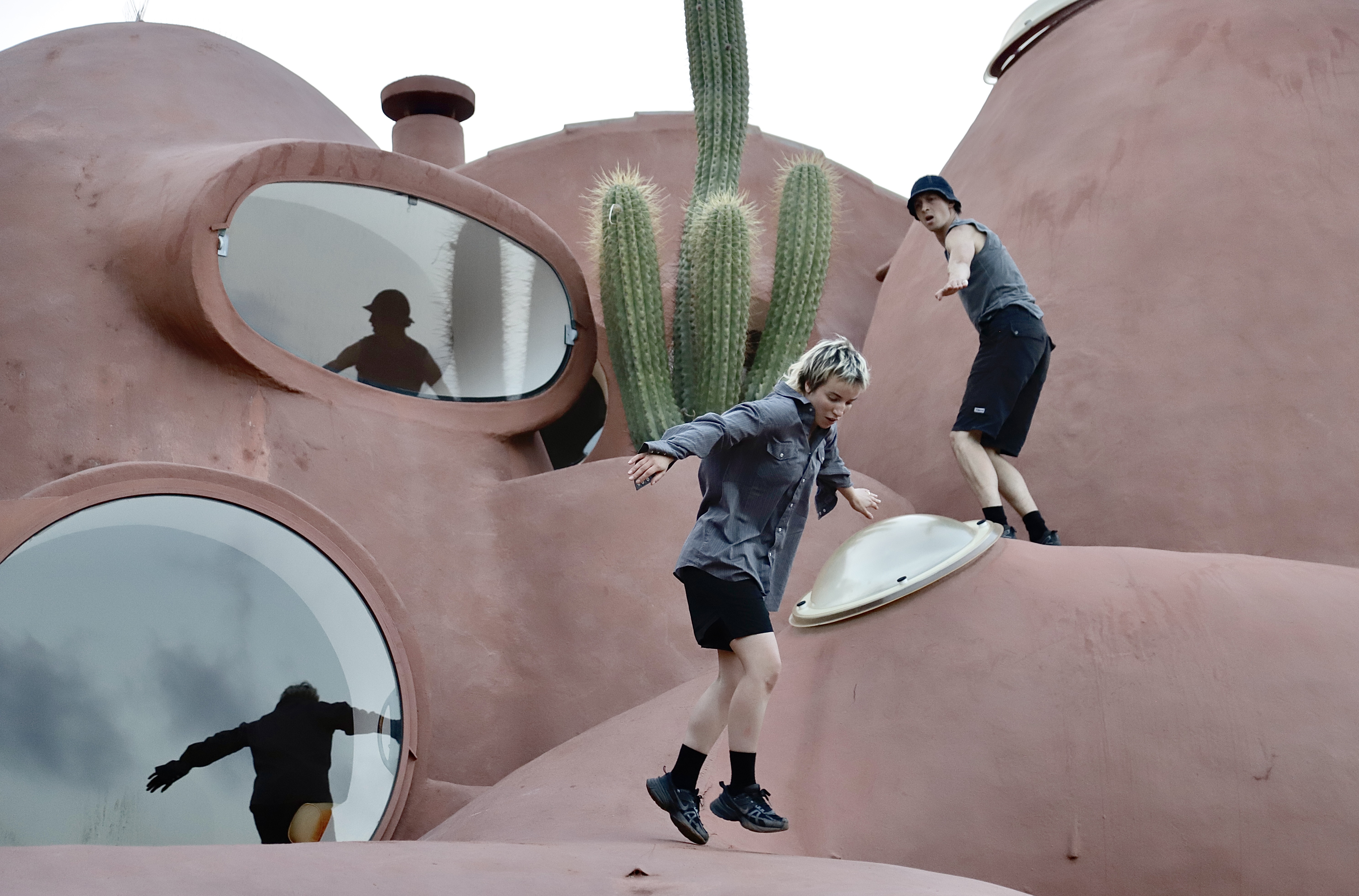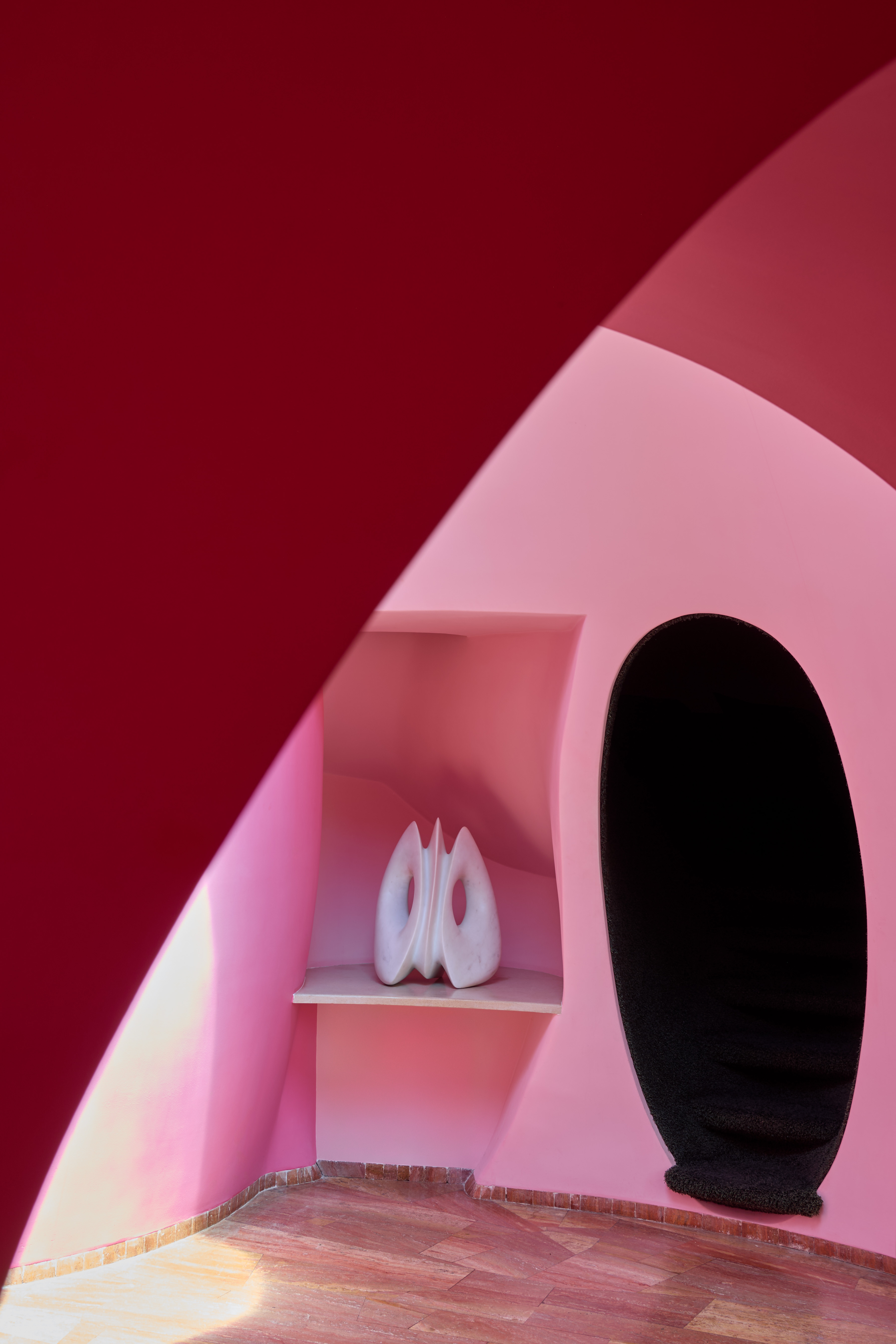
This summer, the bubble architecture of the 1970s Maison Bernard, designed by Antti Lovag on the French Riviera, was illuminated by sound, dance, ceramics, sculpture and design pieces. From bedspreads to benches, each were carefully crafted and curated in response to the organic, ecological and extrovert spirit of the house. In a world full of distractions, the exhibition was specially designed to connect visitors to a moment in time; intimate viewings were accompanied by story-telling guides framing architectural history alongside contemporary issues, with no photography allowed for a focused and meditative journey..

This sensation-oriented atmosphere was set by Genius Loci, a French non-profit initiative that curates multi-disciplinary exhibitions in masterpieces of modern architecture seeking to discover the ‘spirit’ of a place and forge links between heritage and today. Since 2021, founder Marion Vignal, an art historian, author and curator based in Paris, has manifested the concept in and around the city at Gio Ponti’s Villa L'Ange Volant; an Auguste Perret-designed apartment; Atelier Ozenfant by Le Corbusier and Pierre Jeanneret; and a Ricardo Bofill apartment in Noisy-le-Grand, with the belief that immersive installations can be responsive, grounding and bring new meaning to space
Marion Vignal on setting up the French non-profit Genius Loci

Wallpaper*: How and why did Genius Loci begin?
Marion Vignal : Inspired by the Bauhaus movement, I have always considered everything to be ‘art’, from a tiny object to a piece of architecture, I never apply a hierarchy to typology or medium. I’ve never formally studied architecture, so my approach to it has always been emotional and narrative-led, and during a visit to a 1930s house near Milan, I began to think about my role as a curator and how art could help visitors to understand a place from the inside. The concept of Genius Loci is to elevate the spirit of place through an ephemeral experience of sound, smell and the elements, to tell a story and activate the past and future like a piece of literature or theatre. The architecture is the stage and the characters are the artworks; they function with purpose together, bringing opportunities to artists and keeping architecture alive and visible.

W*: The exhibition at Maison Bernard was a poignant moment of reflection on the past 50 years of progress in environmental awareness and construction innovation, which were highlighted by some of the works. What draws you to the interiors of the 20th century?
MV: I have always been attracted to buildings of the 20th century, although I am interested in other periods of architecture too. I could imagine Genius Loci taking place in an 18th century building, but never a 21st century building because the space needs time to develop a soul and the generational layers of life. What first appealed to me about functionalist interiors is that there is space to welcome in imagination. The first edition took place at Gio Ponti’s Villa L'Ange Volant, which represented the evolution of his work from neoclassical to modern. While there is a painting on the ceiling in the living room, otherwise there are these great volumes where we could place sculptures and objects to reveal the curves, light, perspective of the space, to make the architecture visible.

W*: Maison Bernard is full of shapes, niches and levels, shelves, planters and hammocks. There's so many layers for the eye to compress, it was actually quite a relief not to be able to take photographs.
MV: Antti Lovag was very egocentric, I’m not sure he wanted any other artists in the house. He wanted to plan everything, including where objects could be placed. It is certainly a total artwork, yet at the same time the interior offers so many opportunities for display. Even, for instance, on the building itself, where a rooftop performance happened with dancers intuitively finding their way up small sets of stairs and vanishing into a sunken rooftop solarium that previously I had no idea existed. The house was inspired by the shapes of the human body, so it was essential to present the artistic medium of the body.

The first 30 minutes of the performance were slow and silent, against the sounds of the sea, the birds and nature. Some people found it too much, but I think it was radical, to really challenge people to focus on an artistic proposal, the architecture and the narrative. The owner told us from the beginning she didn’t want any photos, and we agreed that this would protect and preserve the experience for the visitors. It’s an energetic space, very emotional and sensitive. It’s an architecture that sharpens your consciousness and makes you feel more alive.

W*: How do you personally live with art, design and space?
MV: I don't define myself as an art collector, because I'm not necessarily interested in materiality. I think I don't need to own artworks to live with because my life is artistic. I have surrendered to art, but more in an immaterial way through books, visits and connections. Sometimes I buy artworks, but it’s very personal, like an unconscious projection. Yet overall I don't like to live with lots of objects, I enjoy the void in order to maintain a mental freedom. I’m eclectic in aesthetic and minimalist, sometimes to the extreme. If I do buy art, I constrain myself to only buying female artists. I think being a collector is about having an adventure with art and always staying intellectually involved.








